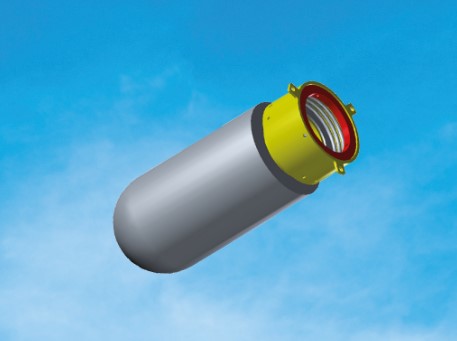The French General Directorate of Armaments (Direction générale de l’armement (DGA)) is stepping up its efforts to procure loitering munitions (LMs) with the issuing of a tender for a manportable system.
One of the lessons to come out of the Nagorno-Karabakh conflict in 2020, and further reinforced by lessons from the ongoing war in Ukraine, is the impact of unmanned aerial vehicles (UAVs) and loitering munitions in tactical-level combat. Formerly confined mainly to the strategic level, in the form of cruise missiles and long-range, long-endurance reconnaissance platforms, UAV technology has now filtered down to the tactical level where, today, individual squads can launch small tactical UAVs to investigate what is behind the next hill or in the next building and, in the case of small LMs, conduct precision ‘kamikaze’ attacks against any identified targets.
A year ago, as a consequence of the above lessons, France urgently requested US-made Aerovironment Switchblade LMs as an initial stop-gap measure. Around the same time the DGA, together with its Defence Innovation Agency (l’Agence de l’innovation de défense – AID), launched the Colibri and Larinae projects, intended to lead to the domestic development, production and deployment of LMs. The Colibri project covers a small, low-cost system, with a 5 km range and 30-minute endurance. The Larinae (Gull) project covers a larger LM with a 50 km range and 60-minute endurance that can attack armoured or hardened targets.
As a third step towards wider employment of tactical UAVs, the DGA has now launched a tender for backpackable LMs, as evidenced by a notification on the EU tenders electronic daily website.
The recent tender describes a so-called “remote-operated munitions system” comprising the LM itself and a ground station, the latter encompassing the command-and-control station, the communications system and, if necessary, the launch system. The entire system shall be compact and light enough to be carried by a single soldier and simple and intuitive enough to be operated by “non-specialists”. As far as the LM itself goes, the tender specifies that it shall “enable operators to observe, at short range, by day and night, mobile and fixed targets, and then cause their neutralisation or destruction. The performance, in terms of observation and sound and visual fidelity, shall make it possible to detect targets without being counter-detected.”
The description given in the tender indicates a compact, lightweight system, with visual, low-light or infrared and acoustic observation sensors. The requirement to avoid counter-detection could indicate an electrically powered system. The offensive capabilities of such a lightweight platform will necessarily be limited; the tender requires destructive effects only against “lightly protected” targets.

Although not specified in the tender, the description of the required LM makes it a reasonable presumption that the present tender is related to the Colibri project. Based on information from this project, one possible candidate for the DGA tender is the Dard from Nexter, which was displayed at the SOFINS 2023 defence exhibition, held in Bordeaux from 28-30 March 2023. The Dard is a recoverable flying-wing design capable of being configured either for surveillance or for attack, the latter using a 0.5 kg fragmentation warhead. Another national possibility is the Sphinx, from MBDA and Novadem. This is reportedly a multi-rotor vertical take-off and landing (VTOL) UAV, possibly based on the Novadem NX70 quadcopter micro-UAV already in service with the French armed forces.
The Larinae project does not appear to be part of the present tender.
The DGA tender does not specify the total cost or quantities to be procured, but does state the expectation that “a few thousand” LMs and “at least a hundred” ground stations will be procured. The contract will also include support services, such as training and maintenance. It is additionally expected that the final contract will include options for further procurements in the future.
The deadline for response to the tender is 15.00 on 12 July 2023.
Thomas Lauge Nielsen












